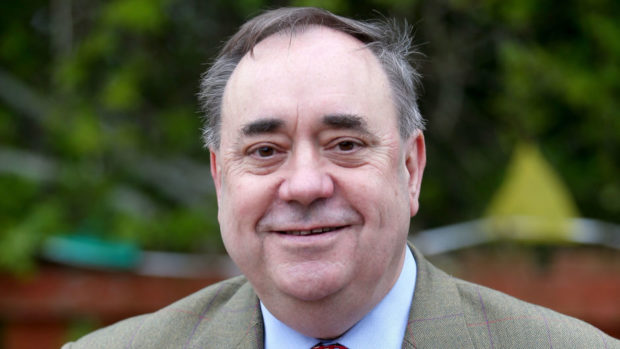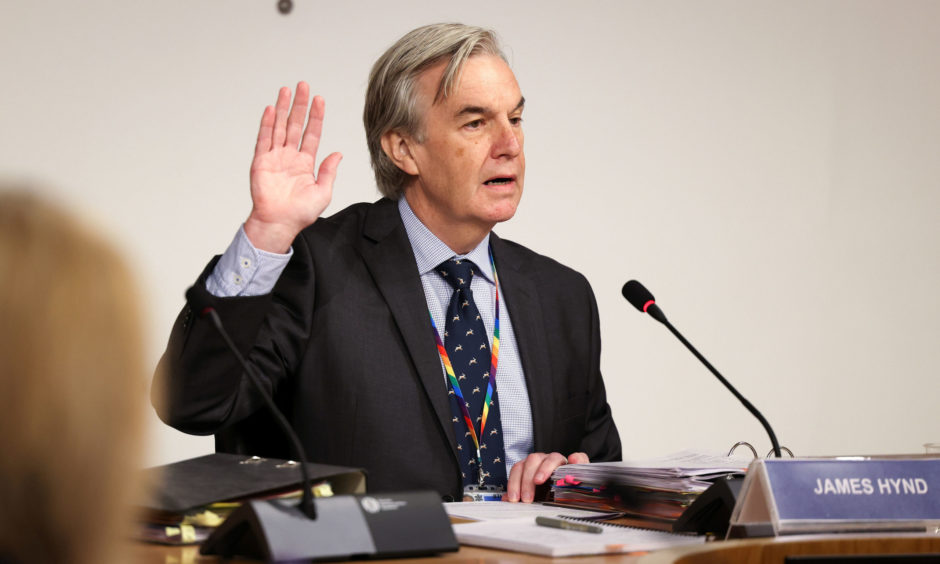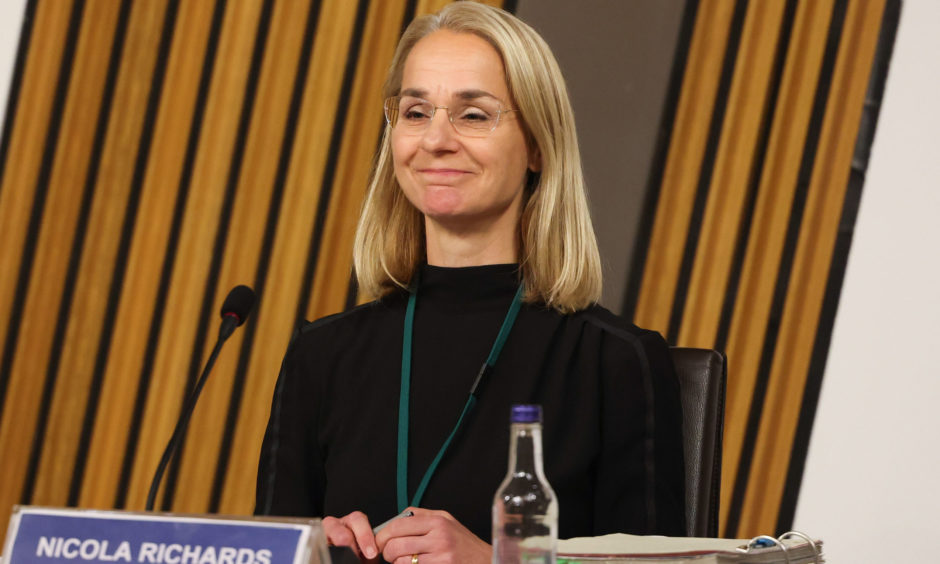When Alex Salmond was subjected to a Scottish Government investigation into his behaviour, the internal inquiry was based on a new harassment complaints procedure that had been drawn up at the end of 2017 in response to the #MeToo movement.
As it was put by the Lib Dem MSP Alex Cole-Hamilton, “before the ink was dry” on the document Mr Salmond became the subject of historical harassment complaints dating from when he was first minister.
The timing of those two events and the fact the document included new and “unique” provisions to take action against “former ministers” have led to suggestions the new policy was designed “to get” the former first minister.
During the second live session of the Holyrood inquiry into how Mr Salmond was treated, senior civil servants were quizzed by MSPs on the development of the policy.
How was the new policy developed and what was Nicola Sturgeon’s role?
The civil servant charged with developing the new complaints procedure said Nicola Sturgeon was keen that the new policy should be overhauled to include former ministers.
Giving evidence to MSPs, James Hynd, the Scottish Government’s head of Cabinet, Parliament and Governance Division Government, said Ms Sturgeon was “keen for the record and for the avoidance of doubt” that the new procedure could be applied retrospectively.
But Mr Hynd maintained the “gap” in the old procedure, which meant former ministers were not covered, was identified by him when he was commissioned to produce the policy by the Cabinet on October 31 2017.
Mr Hynd acknowledged that the inclusion of former ministers made the Scottish procedure “unique” and such a provision had not been adopted at Westminster.
Labour’s Jackie Baillie pointed out that Ms Sturgeon had written to Permanent Secretary Leslie Evans on November 22 2017 and her letter suggested including former ministers.
But Mr Hynd said he had been working on including former ministers from November 7. “We were already there,” said the civil servant, who confirmed the policy had been signed off by Ms Sturgeon and Ms Evans.
Asked about Ms Sturgeon’s letter, Mr Hynd added: “The first minister, I think, was keen for the record and for the avoidance of doubt to make sure that the procedure or whatever review we were undertaking covered former ministers.”
Mr Hynd said legal advice had been taken when developing the policy, despite a successful legal challenge by Mr Salmond.
The Court of Session ruled that the Scottish Government’s handling of complaints against Mr Salmond was unlawful and tainted with apparent bias when the former first minister objected to the way he had been treated. Mr Salmond’s victory resulted in the government paying out more than £500,000 for the ex-SNP leader’s legal costs and triggered the Holyrood inquiry into the process.
Mr Hynd maintained that the process was “robust” and it was the way it had been applied that created the legal problem. He maintained that including former ministers was “the right thing to do”, despite its complexity.
When did the policy’s author first hear rumours about Alex Salmond’s alleged behaviour?
Mr Hynd was asked by Mr Cole-Hamilton when he first become aware of concerns about Mr Salmond’s alleged conduct, which “may or may not” have influenced the development of the policy.
His first answer was to say he first heard of “complaints under the procedure” in August 2018 when they were published by the press.
But Mr Cole-Hamilton said that all he was talking about was “scuttlebutt”, “the rumour mill”, the “quiet mutterings” and water cooler discussions rather than actual complaints.
Pressed further by the Lib Dem MSP, Mr Hynd eventually answered “yes, things were said” when asked if he was aware people in various arms of the civil service had concerns about Mr Salmond’s behaviour.
“Whether they were true or not, I have no idea,” he added. When asked if he had shared those concerns with senior SNP people, ministers or government special advisers, he answered: “No, well, they wouldn’t be concerns. I mean, as you mention, scuttlebutt and rumour are hardly things to start raising formally with senior colleagues.”
Controversy over the sharing of a policy draft with a woman who went on to make a complaint against Mr Salmond
MSPs heard that the draft harassment policy was shared with a woman who went on to lodge a complaint against Mr Salmond.
Nicola Richards, the Scottish Government”s director of people, was challenged on whether this was a “blurring of the lines”.
Ms Richards said the draft policy was shared with the woman in part so she could make an “informed decision” about whether to make a formal complaint.
Green MSP Alison Johnstone questioned if that was a “blurring of the lines”.
Ms Richards said: “The reasons why we shared that, we were trying to establish, in terms of our learning as an organisation, whether this would have made any difference to them at the time, would it have made it more possible to raise issues about a first minister or former first minister?
“It was done so that if they decided to proceed to formal complaint, they had an awareness of the policy likely to be applied.”
As well as sending the draft policy to one woman, Ms Richards said she had had a hard copy of it when she spoke to another woman – but that they “did not come forward with a complaint”.
Ms Richards was also tackled by Mr Cole-Hamilton on an email she sent that suggested to a woman she should wait until the New Year before making a complaint.
Mr Cole-Hamilton wanted to know if the email, which investigating officer Judith MacKinnon was copied into, was sent to ensure the new policy was “live” by the time the complaint was made.
“I think I was going on holiday the next day,” Ms Richards replied.
In his evidence, when asked by Mr Cole-Hamilton, Mr Hynd said at the time he knew nothing about sharing the draft procedure with potential complainers.
Mr Cole-Hamilton teed up his question by saying the new procedure had been “tested in its absolute infancy and before its ink was even dry it would trigger the most explosive allegations in Scottish political history”.
The appointment of a civil servant to investigate Mr Salmond
At the heart of the Scottish Government’s collapsed case when Mr Salmond launched his judicial review was the appointment of civil servant Judith MacKinnon to lead the internal investigation.
Ms MacKinnon had been in prior contact with the accusers, even though the investigation was supposed to have been independent – leading to the court concluding the process had been “tainted by apparent bias”.
Ms MacKinnon was appointed by Ms Richards. Ms Richards was asked if the policy had been applied robustly enough to avoid the outcome of the judicial review.
She said it was thought at the time that the policy was applied robustly and that Ms McKinnon was a suitable person to lead the investigation. Ms MacKinnon had a human resources background with “a wealth” of human resources experience.
But Ms Richards admitted it is now “very clear in retrospect”, following the judicial review, that things could be “interpreted in a different way”.
She added: “Therefore that even the contact that somebody had in their role as a HR professional could be misconstrued. At the time that was not a concern we had.”
Ms Richards also admitted to disclosing to one of the complainants that Ms MacKinnon would “likely” take the role of senior investigating officer if they did decide to move to a formal complaint.


